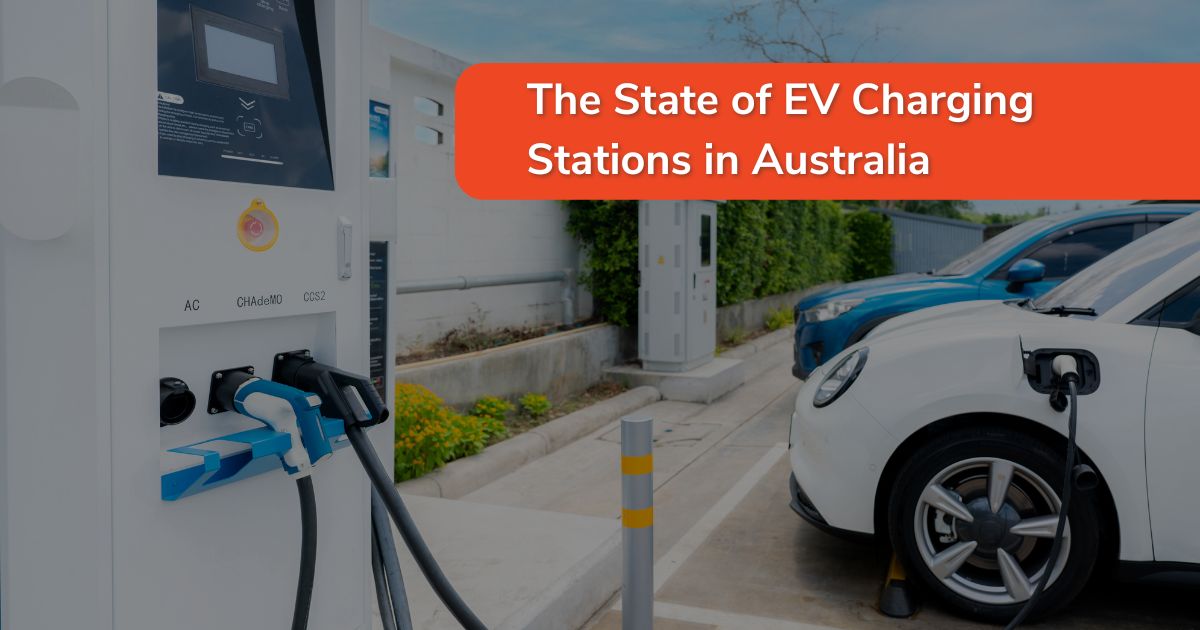The State of EV Charging Stations in Australia

Australia, often lauded for its vast plains and incredible biodiversity, is now on the cusp of an eco-friendly revolution. As electric vehicles (EVs) roll into the mainstream, their silent motors whisper the promise of a cleaner, greener future. But for this future to fully charge up, it’s the charging stations that need to be powered up. Today, we delve into the current state of EV charging infrastructure across the continent, exploring the landscape and the journey ahead for this burgeoning sector.
The EV Surge Down Under
The automotive industry in Australia is witnessing a monumental shift with the burgeoning popularity of electric vehicles. This movement is fueled by a heightened global consciousness about climate change and a rigorous government push towards carbon neutrality. But beyond the hype, there’s a tangible surge—with Australians snapping up electric cars at a never-before-seen pace. As the demand accelerates, so too must the infrastructure that powers these vehicles—literally.
Importance of EV Charging Stations
EV charging stations stand at the fulcrum of the electric mobility revolution. They play a vital role in assuaging the 'range anxiety' that potential EV buyers face. For existing EV owners, they represent a gateway to a lifestyle less dependent on traditional fuels, offering convenience and cost-savings. On a grander scale, each station facilitates a reduction in emissions and a step closer to sustainable urban transport.
The Role of Infrastructure in Adoption
The mere existence of EVs is not enough to sway the hearts of Australian motorists. It's the charging infrastructure—the lifeblood of EV usage—that is predominant in the adoption narrative. The more citizens encounter charging stations in their daily travels, the more they will likely consider EVs as a viable alternative. This creates a positive feedback loop, where infrastructure begets EVs and EVs beget infrastructure.
Benefits for the Environment and EV Owners
For every kilometer that an EV drives charged from renewable sources, there's a win for the environment. These are clean miles, free from the smog-producing tailpipe emissions of traditional vehicles. Moreover, owning an EV can significantly lower the cost of transportation, especially when charged at off-peak times or with solar energy, further bolstering the economic case for a switch.
The Current Landscape of EV Charging Stations in Australia
Stepping into the present, the landscape of EV charging stations in Australia is a patchwork, emblematic of a system still in its nascent stages. In major cities like Sydney, Melbourne, and Brisbane, one might find an EV charging station nestled in a shopping center car park or located at a highway service stop, a testament to the growing urban presence of these charge points.
Overview of the Existing EV Charging Network
The existing network is densely concentrated in urban hubs and along major arterial roads. On a numeric scale, there’s been significant growth in the number of charging stations, especially fast-chargers capable of juicing up an EV in minutes rather than hours. However, when juxtaposed with the vast distances between city centers and the remoteness of the Australian Outback, the network appears somewhat localized and inbuilt for urban-centric travel.
Accessibility in Major Cities and Regional Areas
Sydney, Melbourne, and Perth boast the lion’s share of Australia's public chargers, with an increase in on-street charging options tailored to urban dwellers. The story changes, however, in regional towns and remote areas, where accessibility to charging infrastructure dwindles. This urban-rural divide presents a stark contrast and could be a barrier for rural residents considering EV adoption.
Challenges and Limitations
The charge towards a robust EV charging network isn't without setbacks. The Australian terrain is unforgiving, and auto manufacturers are still building the charging stations’ capacity to weather the elements. Other obstacles include the compatibility issues encountered when attempting to charge various EV models and the inherent challenge of long distances in a country renowned for its expansive landmass.
Insufficient Charging Infrastructure in Remote Lands
Outback Australia, while enchanting in its vastness, presents a daunting prospect for an EV driver. With distant towns and kilometers of uninhabited terrain, the lack of charging infrastructure is palpable. This deficit reframes the narrative, highlighting the indispensable need for 'destination charging' solutions en route to regional landmarks and essential services.
Compatibility Issues and Variability
The existing web of charging stations is still being threaded to standardize protocols and voltage outputs. Ensuring that each EV—be it Tesla, Nissan, or Hyundai—can pull into any charging station without a hitch is essential for user experience and the trust that the system will deliver.
Cost as a Barrier
The installation costs for new EV charging stations can be exorbitant, deterring prospective hosts in rural or lower-income areas. Then there's the trickle-down effect on the consumer, where the cost of operating these stations may translate to higher charging rates, potentially off-putting to new EV drivers.
Government Initiatives and Policies
Recognizing the pivotal role of EVs and their charging stations, the Australian government has introduced a suite of policies and programs aimed at fostering development. These initiatives span financial incentives, research and development grants, and public-private partnerships, providing a tailwind for the nascent industry.
Overview of Government Programs and Incentives
At the federal level, programs like the 'Future Fuels Strategy' are aligned towards strategic investment in low-emission vehicle technologies, promising a multi-pronged approach that includes supporting charging infrastructure. Conversely, states like Queensland have unveiled specific EV policies, including funding for fast-charging corridors along the coastline.
The Role of Private-Public Partnerships
Real progress is often the product of collaboration, and the EV charging industry is no exception. Through partnerships with energy companies, local councils, and private investors, public funding can be leveraged to achieve more extensive, more effective outcomes, spawning a network of chargers that is both publicly accessible and privately sustainable.
Future Outlook and Opportunities
The road ahead is electrifying, with the EV market poised for exponential growth. This trajectory propels a concomitant need for expanded charging infrastructure, signaling opportunity for innovation and investment.
Anticipated Growth in the EV Market
As battery technology advances, EVs will only grow more appealing, with increased range, reduced charging times, and more affordable price tags. The market is expected to surge, and with this surge, chinks in the infrastructure armoring must be filled.
Renewable Energy Integration and Smart Charging Solutions
Harnessing Australia's formidable solar and wind resources, EV charging stations stand at the precipice of a renewable energy revolution. The integration of smart grid solutions can enhance the stability of renewable charging, enabling energy to be stored during peak production and dispensed at the optimal time.
Conclusion
The journey from fossil fuels to electrics is both exciting and indispensable. As we stand at the crossroads, it is evident that the charging stations of Australia mirror the landscape—vast, promising, but with untold potential awaiting to be explored. The narrative of electric mobility is one of evolution, calling for stakeholders to amplify their efforts in integrating, innovating, and investing in a charging network that is as vast and diverse as the Australian spirit itself. In doing so, we don’t just power vehicles; we power dreams of a sustainable future, one charge at a time.
%20(1).png?width=265&height=96&name=www.smartenergyanswers.com.auhs-fshubfsSmart%20Energy%20Answers%20Logo%20(HIRES)%20(1).png)

.png?width=514&height=121&name=Tesla%20Powerwall%203%20(new).png)







